Women in Advertising Since the 1930s - Submission, Shame and Sexualisation
UNITED KINGDOM / AGILITYPR.NEWS / March 05, 2021 / With International Women’s Day just around the corner Yoppie, the pioneers of personalised, organic period care delivered through your letterbox, has taken a look back through the ages to see how advertising for women’s hygiene and beauty products has changed, if at all, as well as how UK women currently feel about their representation in advertising.
It is no secret that women have played a huge role in advertising throughout the decades, whether this was promoting feminine products, household essentials or simply a packet of cigarettes. What is interesting though is how the perception of women has altered over the years.
1930s
Female hygiene is for your husband
Although the 1930s was the decade in which the modern-day tampon was first invented, advertising of period care products was a no go, not until the 1970s.
There were of course adverts for women’s health and hygiene in the way of cleanliness and beauty products but the overriding theme was more on how to maintain yourself for the good of your husband.
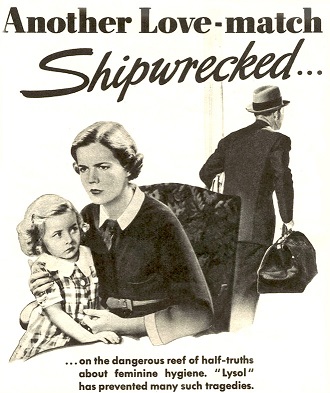
1940s
A woman’s role is to look and smell good
This was something that continued into the 1940s. Women were encouraged to look after their bodies and personal hygiene not for their benefit, but for that of their husband.
The adverts that were showcased at this time wanted women to believe that their role in ensuring a successful marriage was looking and smelling good.
It wasn’t just men that the women had to impress though, some companies used shame tactics and paranoia as a means to sell their products.
Using women as a weapon against each other, advertising created the perception that you were judged for being single, emphasising that this was down to you not using the latest soap or hand cream, or simply because you didn’t have the “right” sized chest.
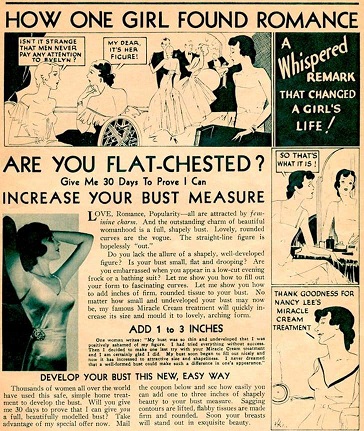
1950s
A woman’s place is at home
Women’s inferiority to men remained a common advertising theme in the 1950s.
It was made clear that the woman’s place was in her home and the idea of a woman in the workplace was unimaginable.
Instead of promoting women in the workplace, companies played on the fact that being beautiful was their business and therefore their job.
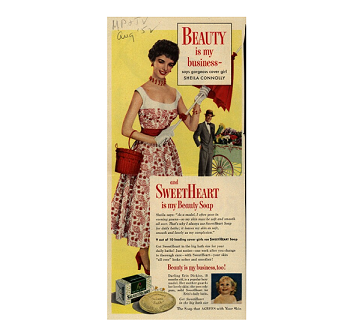
1960s
You can have a career, but remember your place
Although there was a shift in attitude towards women in the 1960s, particularly around the acceptance of women pursuing an education or even a career, there was still the obvious exploitation in advertising.
Companies continued to suggest that women were inferior to men when promoting their products but as well as portraying women as the lesser, they also sexualised them.
One such advert portrayed a naked woman laying on the floor next to a man’s shoe with the words “keep her where she belongs”.
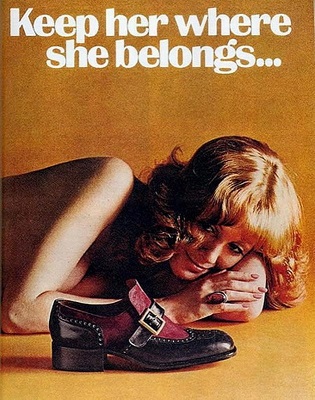
The 1970s
A step forward for female hygiene in advertising?
With period care products hitting our billboards in the 1970s the expectation was that the advertising world had taken a positive step forward.
Although this was true in some ways, an underlying theme of shame remained with regard to periods, continuing to pitch women against each other with the overall benefit being for the man, not the woman.
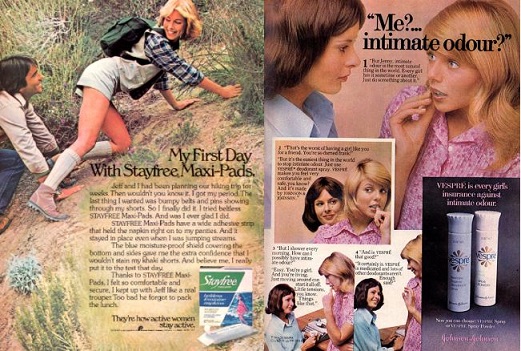
1980s
Women in the workplace (Finally!) and a momentous change in advertising trends
Adverts showing strong, powerful women in the workplace came into play in the 1980s.
Companies wanted to have a woman in their adverts as the main feature, they wanted them to look fearless, empowered and equal to men.
There was very little exploitation and the stereotyping if any seemed to be a lot more subtle. Finally, there was a positive change.

1990s
Sex sells
However, despite the positive progress of the 70s and 80s, the 90s was a case of one step forward, five steps back, as the theme that “sex sells” swept through advertising.
The only saving grace of this decade was an air of equality, albeit while sending the wrong message.
Although women were massively sexualised, they were not portrayed as the inferior sex and actually, male models were also exploited.
While the focus was largely on beauty with many ads portraying models within advertising, other darker themes of nonconsensual sex and the objectification of women as simply another object also emerged, largely throughout the gaming industry.
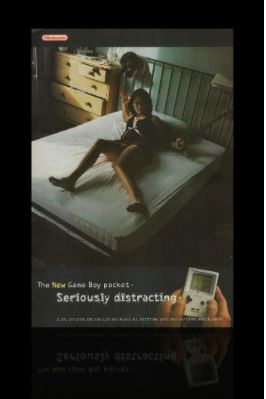
Health is big business and companies want women to see the health benefits of their products and how it will make them feel, as much as how it will make them look.
Convenience and how a brand can benefit the busy life of the modern day woman has also taken centre stage, with many juggling both family life and a career, leaving them with little time left once the two have been taken care of.
Another big step forward in recent years has been the de-stigmatisation around periods and while discretion often remains a theme, brands like Yoppie are helping to tackle the subjects of periods and the wider menstrual cycle head-on.
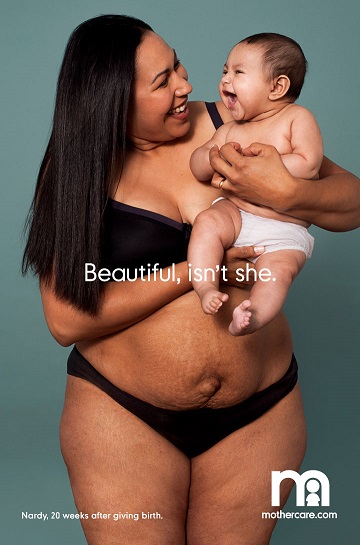
The new millennium
So has anything changed in the last 20 years?
Yes and no. Women are still massively sexualised within advertising, you need only watch the regional Super Bowl advert that aired in 2015 featuring Charlotte McKinney to see that.
However, it isn’t as blatant as it has been and thankfully, themes of inferiority and sexism have vanished.
In its place, empowerment has taken centre stage and advertising covers all areas of life for the modern day women, whether that be as a mother and wife, a career professional and everywhere in between.
While there is still very much a focus around looking good, advertisements around women’s beauty and hygiene products are now focused on the actual health care and benefits they bring and feature women of all shapes, sizes, races and ages.
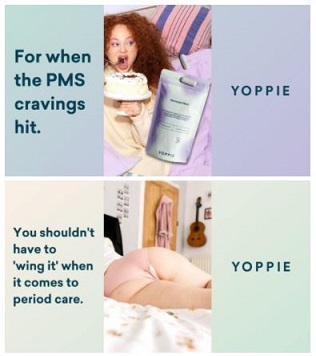
Still work to do
However, despite these positive steps forward, a recent survey of UK women by Yoppie has found that there is still a lot of work to do!
Yoppie’s research found that 51% of women don’t believe women are fairly represented within advertising. A huge 86% don’t believe advertising portrays real women and the reason for this is pretty clear.
When asked what they felt was the biggest issue with the way women are portrayed in advertising, 27% stated there was too much focus on beauty and improving personal appearance. 22% believed there was not enough diversity in body shape, while 15% thought women were still over sexulaised.
A further 13% want to see more diversity in overall looks, with 9% believing there is still too much focus on women solely as mothers. 8% would like to see more race diversity, with 5% also wanting more diversity in sexual preference.
Founder of Yoppie, Daniella Peri, commented:
“It’s quite amazing when you look back at the role women have played in advertising over the years and just how far we’ve come. But it’s clear we’ve still got work to do, with today’s advertising lacking in terms of showing the real modern day woman in all her diverse glory.
The good news is there are plenty of companies tackling this issue head on, whether it be catering to older women, women of different shapes and sizes, or shining a light on previously taboo subjects such as menstrual health.
It’s a drastically different world to the one we were living in back in the 1930s and so we’re confident that with the focus now on modern day women, it won’t be long before the advertising world presents a truly level playing field between genders.”
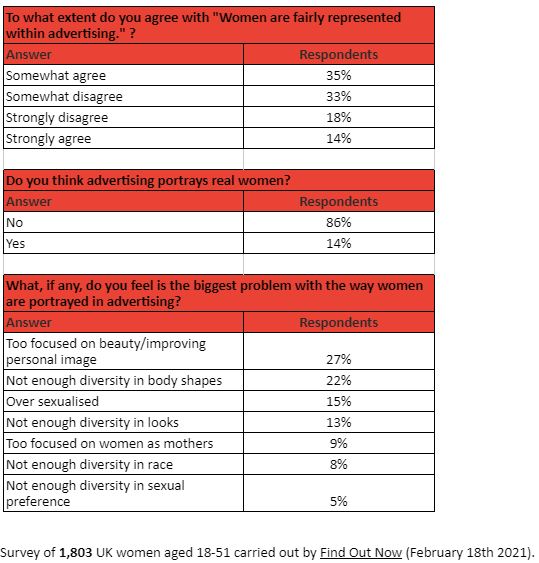
About Us
Yoppie
Advertising examples sourced from: Mascola (1930s), Collectors Weekly (1930s), Daily Mail (1940s), AdStoryTime (1940s), Vintage Browser (1950s), The HouseWife Modern (1960s), Flash Back (1970s), Whaaheda Haris (1980s), Vintage Browser (1990s), The Love Post (2000s onwards), AdNews (2000s onwards), Yoppie (2000s onwards), Campaign Live (2000s onwards).
Yoppie provides personalised menstrual care solutions that enable people to take control of their menstrual health.
The company was born out of the realisation that there was a lack of education, resources and quality products for people to better manage and understand their bodily cycles - especially their menstrual cycle. So Yoppie decided it was time to create a new, modern model for how people access menstrual care.
By offering personalised product recommendations, easy-to-understand, science backed health content, high quality menstrual care products and letterbox delivery - Yoppie and it’s subscription services are paving the way for a future where menstrual care management conveniently fits into the lifestyle of today’s modern woman.
Yoppie’s Mission:
Yoppie exists to enable women to take control of their menstrual cycle through personalised product solutions and access to scientifically-backed health education.
Yoppie’s Social Media:
https://www.instagram.com/itsyoppie/
https://www.facebook.com/itsyoppie/
Contacts